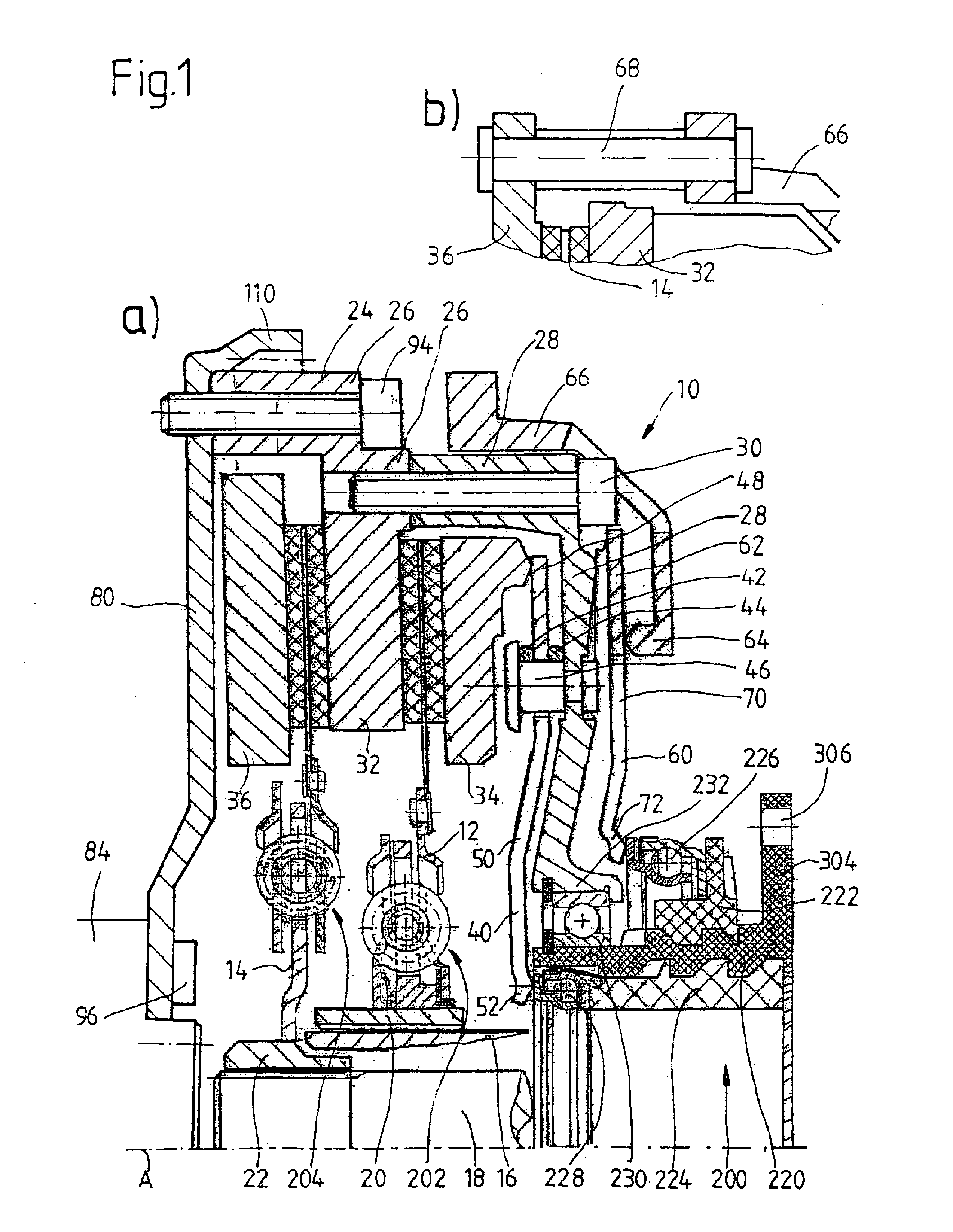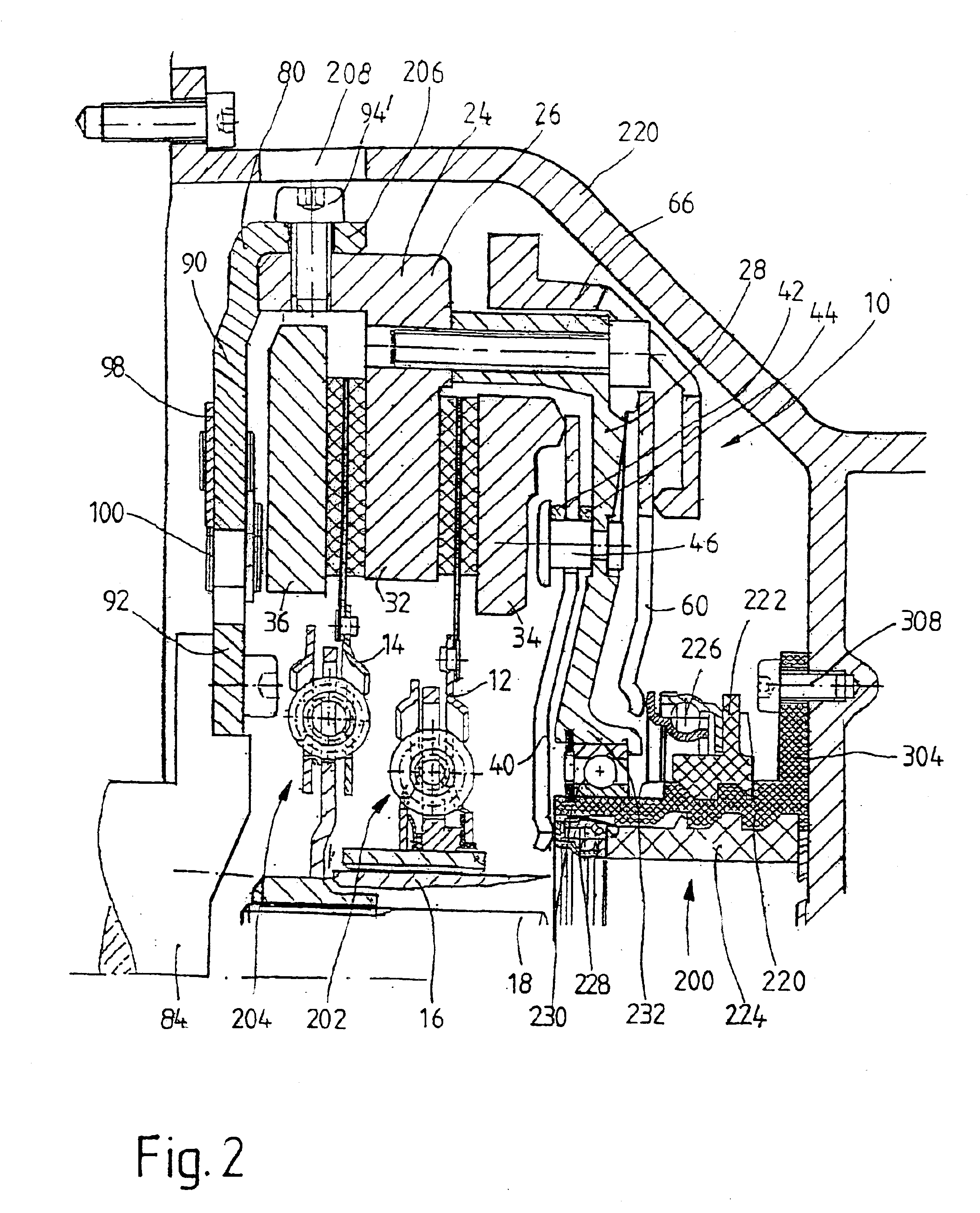Actuating device for a friction clutch device, possibly a dual or multiple friction clutch device
a technology of friction clutch and actuating device, which is applied in the direction of friction clutch, clutch, mechanical actuated clutch, etc., can solve the problems of oil leakage, excessive load on the takeoff shaft, and troublesome leakag
- Summary
- Abstract
- Description
- Claims
- Application Information
AI Technical Summary
Benefits of technology
Problems solved by technology
Method used
Image
Examples
Embodiment Construction
Various aspects of the invention are explained in greater detail below on the basis of special exemplary embodiments, namely, so-called dual clutches of the friction disk type, where, in the case of the exemplary embodiments of FIGS. 1 and 2, the dual clutches are of the NORMALLY CLOSED type, which are actuated by pushing, whereas the exemplary embodiments according to the invention shown in FIGS. 3 and 4 are dual clutches of the NORMALLY OPEN type, which are actuated by pushing. The aspects of the invention in question, however, are independent of the type of clutch and of the way in which it is actuated. The various inventive aspects can be implemented both in the case of simple clutches (with only one clutch arrangement) and in the case of dual clutches (or, in general, multi-clutch devices with two or more clutch arrangements), namely, both in the case of clutches of the NORMALLY OPEN type and those of the NORMALLY CLOSED type, and independently of the type of actuation, namely,...
PUM
 Login to View More
Login to View More Abstract
Description
Claims
Application Information
 Login to View More
Login to View More - R&D
- Intellectual Property
- Life Sciences
- Materials
- Tech Scout
- Unparalleled Data Quality
- Higher Quality Content
- 60% Fewer Hallucinations
Browse by: Latest US Patents, China's latest patents, Technical Efficacy Thesaurus, Application Domain, Technology Topic, Popular Technical Reports.
© 2025 PatSnap. All rights reserved.Legal|Privacy policy|Modern Slavery Act Transparency Statement|Sitemap|About US| Contact US: help@patsnap.com



